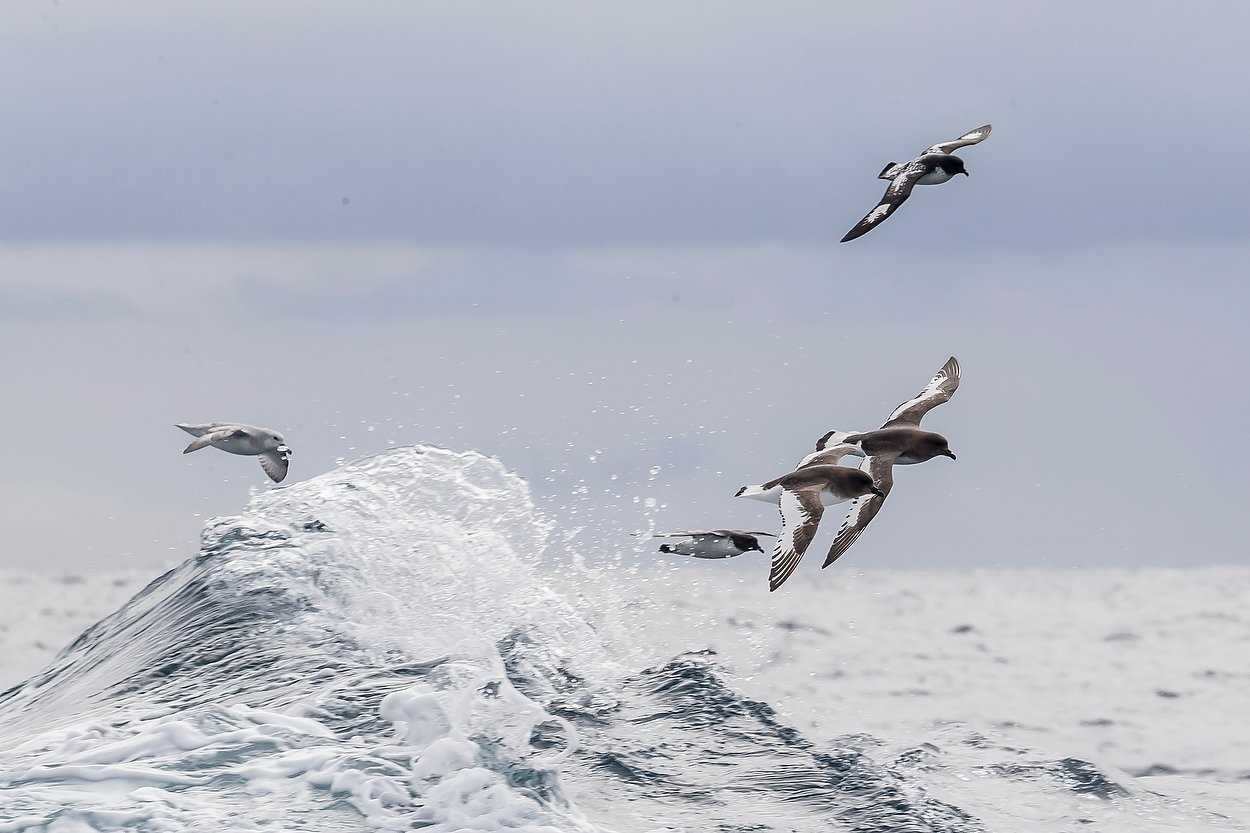As we enjoyed our “Blue Ice Gourmet Dinner” last night, National Geographic Orion passed north through Dallman Sound and into the Drake Passage. Captain Graser has us on a course to minimize the motion of the ship, taking swells on the port quarter. The overnight ride was comfortable.
Day after wonderful day of Antarctic sun have yielded to a dense cover of clouds. We are now accompanied by an ever increasing abundance and diversity of sea birds. We have left penguins behind and are now escorted by cape petrels, Antarctic petrels, southern giant petrels, southern fulmars, prions, and other hearty avian creatures.
By late afternoon we enter fog. This is a sign that we are crossing through the Antarctic Convergence, the meeting between the Southern Ocean which surrounds and flows around the Antarctic continent, and the southern Atlantic and Pacific Oceans. While the temperature difference between the Southern Ocean and the Atlantic and Pacific is only a few degrees Celsius, it has a profound effect on life in and above the water. When we emerge to the north, we should see albatrosses and other bird life that we have not seen since we crossed the convergence more than a week ago.
The expedition team gives presentations, helping us to better understand and appreciate what we have seen. Caitlyn Webster speaks about pinnipeds and Adam Cropp leads a program and discussion about climate change. Evening recap is wide ranging. Fabulous meals, as we have come to expect, refresh us from morning through the evening.
This is a day to begin to digest all that we have done during our extraordinary visit to Antarctica. It is a time to look through the more than one hundred thousand images that we, as a group, have taken. We share our favorite experiences and begin looking to the future, to our next expedition to the Antarctic. An epidemic of polar fever has taken over the ship. The only cure is our next trip to the Great White Wilderness.









